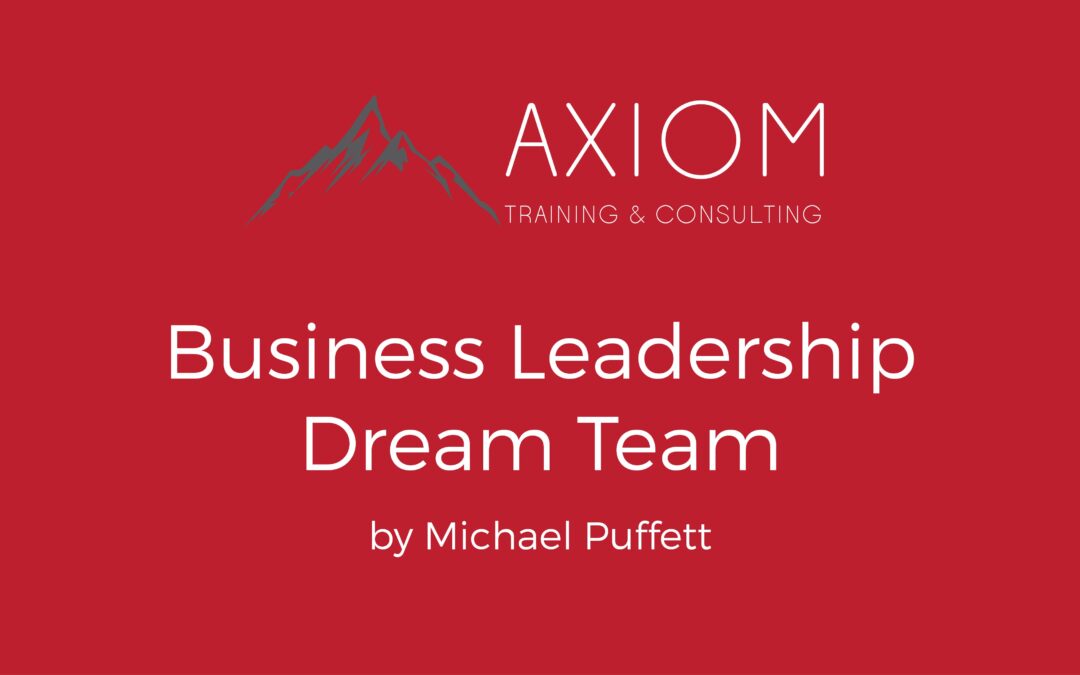I often get asked, “what is the ideal makeup of a leadership team to have the greatest chance for success”. Now obviously there are a myriad of answers to this question, with just as many variables. I do however have a few key thoughts on this as guidelines rather than a hard and fast rule.
KEY 1 – The ethos, values & DNA of your leadership team
It is vital that any leadership team carries the same non negotiables in terms of ethos and values. This is more about how you think as a team, than what you do. Often you will hear leaders say, “we are not all ON THE SAME PAGE”. This simply means that there is varied and conflicting thinking that is hampering the progress of the team. This left undealt with can lead to many far more serious issues.
For a team to all move in the same direction, building maximum momentum for the greatest impact, the whole team needs to agree on the non negotiables that hold them together.
- How we treat and value people
- What our non negotiables are as a company
- How far are we prepared to go to win business
- How leaders in the company lead
- Our view concerning women in our company. etc etc
These are all examples of very important issues within any company. They need discussion, thought and principled decision making to formulate “who we are” and “How we operate”
Just because two people work in the same industry, does not mean their values or DNA align. This is the cause of many huge conflicts in business and the end of many a viable company.
Key 2 – Round pegs in round holes
It’s great to have the “right” people in your company. It’s even better to have the right people in the RIGHT positions in your company. So often when I’m working with a business entity, I see too many good people in the wrong positions in the business. Filling the space and position because of need rather than strategic intent. Longer term, this can be as destructive as having the wrong person altogether.
Key 3 – The makeup of the team
In any dream team there are various skill sets, ways of thinking, strengths and ways of doing things:
- The Visionary – This is the person strong in pioneering, entrepreneurial capacity, bigger picture thinker, risk taker, often a real “go getter”
- The Business “Seer” – The ability to see trends, understand moments, opportunities and markets, predict future movements etc
- The Financial Leader – Having an astute financial brain as part of your senior team is a non negotiable. They bring the financial acumen so lacking in many companies. This skill can often identify the problem, but doesn’t always know how to fix it. The stereotype says they struggle in the area of EQ.
- The Pastoral / HR leader – The ability to understand people, works tirelessly to uplift individuals, the encourager and protector of staff. A keen sense of right and wrong with a strong EQ
- The Equipper – This is the trainer, the skill set that loves to equip staff and leaders to do better, increase their capacity, understanding and know how. The coach. The mentor.
- The Sales and Marketing Leader – These two skills sets are vital for any growing company. Sales is the “tip of the spear” and marketing is the “soft edges” facing the potential customer. Having members of your team that are strong in these areas is a huge asset.
Recently I was working into a company where the senior team had a few very strong skill sets and some huge underlying weaknesses and blind spots. They struggled to truly value any skill set or way of seeing and doing things other than their own. This led to incredible hidden frustration and negativity from loyal, hardworking staff and had the potential to, if left unchecked, cause many to leave in frustration or continue totally discouraged and unmotivated.
Many boards of directors or leadership teams often struggle because senior leaders keep appointing team members that are similar to themselves. Even though this makes things easy at the start, it often leads to significant leadership issues and skill / personality imbalances further down the road.
It is vital that any leadership team takes care around the makeup of their team and strategically positions the individuals with similar values, yet specific varied skills sets and personalities in correct position for greatest impact.

